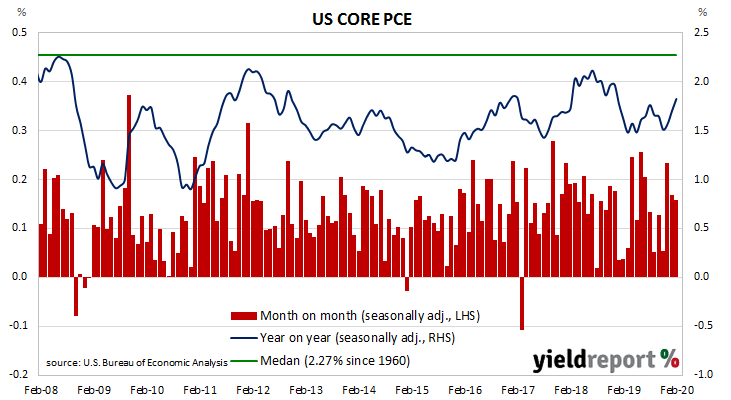One of the US Fed’s favoured measures of inflation is the change in the core personal consumption expenditures (PCE) price index. After hitting the Fed’s target at 2.0% in mid-2018, the annual rate then hovered in a range between 1.8% and 2.0% through to the end of 2018 before dropping in the first quarter of 2019 to around 1.5%. It has ranged between 1.5% and 1.8% since then.
The latest figures have now been published by the Bureau of Economic Analysis as part of the February personal income and expenditures report. Core PCE prices increased by 0.2% for the month, above the +0.1% increase which had been expected but the same rate as January’s 0.2% increase after it was revised up from +0.1%. On a 12-month basis, the core PCE inflation rate ticked up from January’s revised rate of 1.7% to 1.8%.
US Treasury yields finished considerably lower, although the day’s change was more likely the result of broader market concerns over US COVID-19 infection rates and moves by investors away from equity markets. By the end of the day, the 2-year Treasury yield had fallen 6bps to 0.24% while 10-year and 30-year yields had each plunged by 18bps to 0.67% and 1.26% respectively.
In terms of US Fed policy, a rate change of any sort remained unlikely given the federal funds rate has been at the effective lower bound since the US Fed made its second emergency cut for the month on Sunday 15 March.

